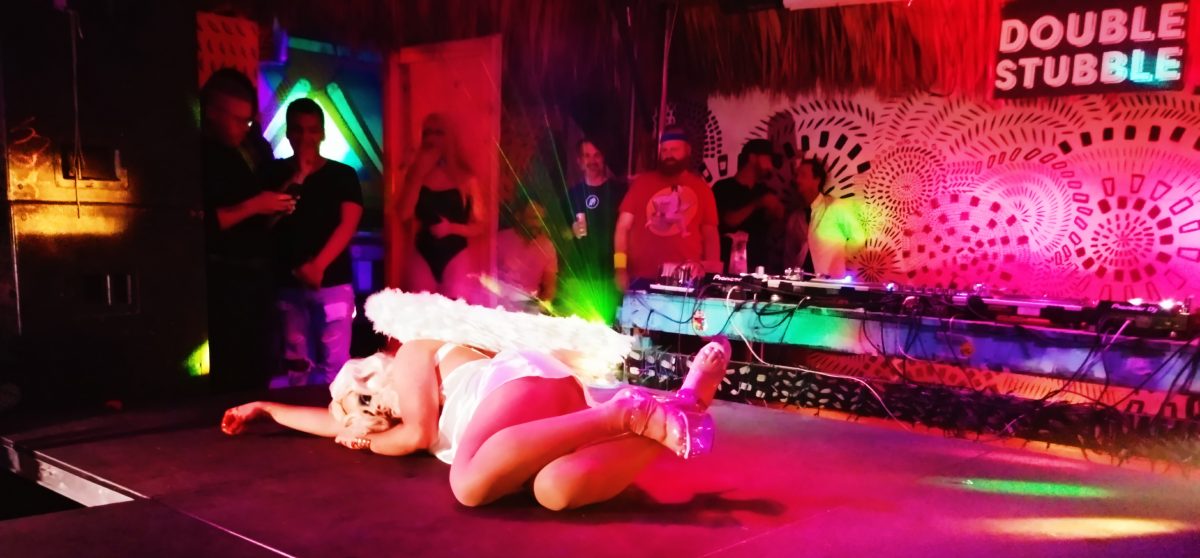For this week, I decided to focus on how gentrification in Wynwood occurred. In light of how gay gentrification does not fit into how Wynwood’s queer scene came to be, I am interested in how Wynwood became gentrified and how then that might relate to the nightlife.
I first read an article in the Miami New Times entitled “The 6 Phases of Gentrifying Neighborhood in Miami,” by Kyle Munzenrieder published on October 8, 2015. This guide uses Wynwood and another neighborhood called Edgewater as models. The first phase includes the establishment of one or two art galleries, which tend to be countercultural or experimental. At the same time, there is an influx of young people looking for cheap rent who work in creative fields but are underpaid. In the second phase, more art galleries begin opening up, which then draws the attention of people, deeming this neighborhood as popular or up-and-coming. Real-estate and businesses begin to present themselves, matching the aesthetics of the galleries that are drawing attention and patronage. Much of the nightlife in the neighborhood is from the galleries’ event nights. In the third phase, investment begins in earnest and investors begin to purchase abandoned properties or de-industrialized areas and turn them into more galleries, restaurants, stores, or bars. Businesses from the neighborhood that existed pre-gentrification begin closing down and being bought out by new experimental or foodie restaurants. In phase 4, international and more high-end galleries begin to take over. More nightlife options are available, all of which try to match the trendy, experimental and counter-culture feel of galleries. Older buildings are torn down and re-zoning happens, so that a once-flat neighborhood now has condos and mid-rises. In phase 5, galleries begin to disappear but the neighborhood retains an “artsy” feel and aesthetic. The mid-rises are opened up for living, leading to more of an influx of young professionals. Restaurants continue to be elevated and begin to serve high-end service. In phase 6, the neighborhood loses all traces of its counter-cultural beginnings and is now a high-end, luxury neighborhood. High-rises begin to pop up. Wynwood is in phase 5.
The second article I read was titled “Wynwood, a story of Instagram Gentrification” by Shaan Patel published March 3, 2019 in Miami Grid. Patel attributes the more current gentrification of Wynwood to high visibility of the neighborhood on social media which attracts more development. Patel states that this begin with the “Wall of Fame” which was a side of an old Coca Cola factory in Wynwood which could be seen from the highly traversed I-95. This wall was used by up-and-coming artists for visibility. Patel argues this associated Wynwood with the arts which led arts organizations such as the South Florida Art Center to relocate in Wynwood. The art scene was bolstered by investors such as Tony Goldman buying property and turning them into art galleries. This art scene was not accessible to the public until the opening of Wynwood Walls, which is an open air graffiti gallery which did not require cost of entry and was open to anyone walking by. This became a hot-spot and people flocked to the Walls to take pictures and thus this area became the center of social-media attention in Miami. Followers began to translate as currency to art galleries, business owners, and art-buyers. For art basel, hopeful street artists would flock to Wynwood to present their art and leave their Instagram handle in order to gain more followers. At the same time, business looking for a unique brand turned to “quirky” Wynwood as an opportunity. People began to share photos of their coffee, bread, and food on social media which then increased the visibility of the neighborhood as well. As a result of such visibility, more business began moving in and leading to more development. This becomes a cycle, where the visibility of the neighborhood attracts more people, who then share their experience on social media, only increasing visibility and drawing in more people.
